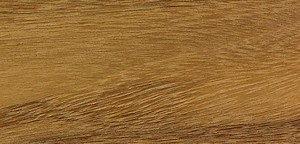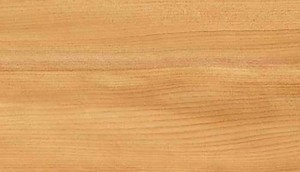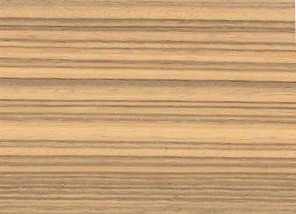Woods from The Woodsmith Pty Ltd
PLEASE NOTE: The following is Information Only on some of the species that we have sold over 40 plus years.
Information is for reference only about each species & some of their features. THIS IS NOT A STOCK LIST.
Many of these species are now very scarce both in Australia and worldwide or are no longer available.
Woods marked – CITES are a Restricted and Endangered Wood Species
Woods marked – RED List are are at risk of extinction.
CITES is an international agreement between governments (the Convention on International Trade in Endangered Species of Wild Fauna and Flora)
Red List Established in 1964, The International Union for Conservation of Nature’s Red List of Threatened Species
For species and pieces we currently have for sale, see our Woodsmith Timber for sale pages
For a Species List of Woods previously sold by The Woodsmith Pty Ltd, see our Species Identification List
Information is for reference only about each species & some of their features. THIS IS NOT A STOCK LIST.
Blackwood - Tasmania
( Acacia melanoxylon)
It varies in colour ranging from light golden-brown to deep brown (sometimes with a reddish tint) and occasionally showing black streaks, the grain of the wood, which can be straight or wavy with a natural lustre. Fiddleback figure is a sought after feature of this timber. Turns very well & holds fine detail.

Silky Oak - Queensland
(Grevillea robusta)
Heartwood is pale pink to light brown, with a lacelike grain.
Quarter-sawn timber shows the decorative figure. Turns easily, to a smooth surface.

Hairy Oak - Queensland
(Allocasuarina inophloia)
A small tree, hairy oak has unusual bark that gives it its other names, like stringybark oak and woolly oak.
It is not a true oak, but is part of the genus of woods known as known as sheoaks.

Gidgee - Queensland
(Acacia cambagei)
Medium to dark brown, with darker streaks. Sapwood is yellow. Sometimes found with curled figure, then highly prized and called “Ringed Gidgee.”

African Blackwood - East Africa
(Dalbergia Melanoxylon) – now listed on CITES
Finest of all turning woods, holds detail well. Black, with little or no discernible grain, the wood Clarinets are made from. Grain is straight; fine, even texture and good natural luster..

African Bubinga -West Africa
(Guibourtia demeusei) – now listed on CITES
Excellent turning wood. Colour red brown with red & purple veining, texture coarse but even, polishes to an excellent finish.

Afromosia - West Africa
(Pericopsis elata) – now listed on CITES
Heartwood is yellowish brown, grain is usually straight, though it can be interlocked, fine texture and natural luster, turns and finishes well.

Bocote -Mexico
(Cordia geranscanthus)
Mexican Rosewood – Yellowish brown with dark brown to almost black stripes. Colour tends to darken with age. Grain patterning can be quite striking, particularly on flatsawn areas

Cedar of Lebanon – Mediterranean Region
(Cedrus libani) – now on Red List.
Light brown with a pronounced growth ring figure, Light in weight and smooth in texture. The strong and very pleasant fragrance repels and kills moths, hence the traditional use of this wood in wardrobes & drawer bottoms

English Boxwood – England
(Buxus sempervirens)
From Boxwood bushes, Creamy yellow colour, very dense and fine grained. Excellent wood for woodturning & a very good carving wood particularly for fine detail carvings. Working with this wood is a great experience. Now Very hard to obtain in Australia.

Cocobolo – Mexico
(Dalbergia retusa) – now listed on CITES & the Red List
Excellent fine turning wood. Colour rich red with other multicolours, darkens quickly on exposure, hard dense wood, fine texture,

English Elm- England
(Ulmus procera)
Colour light to medium reddish brown with lighter sapwood, interlocked grain. Its coarse texture makes it distinct from other timbers. Turns & finishes well.

English Oak - England
(Quercus robur)
Good for Turning or Carving & furniture. Colour light to medium brown, Grain is straight, with a coarse, uneven texture.

Honduras Mahogany – South America
(Swietenia macrophylla) – now listed on CITES & the RED List
Excellent fine turning wood. Colour rich red with other multicolours, darkens quickly on exposure, hard dense wood, fine texture,
Genuine Mahogany from Central South America Colour – reddish brown.tends to darken with age, texture is medium and uniform, with moderate natural luster. Turns, glues, stains, and finishes well. Uses – Furniture, turned objects, musical instruments, and carving..

Huon Pine - Tasmania
(Lagarostrobos franklinii)
Formerly (Dacrydium franklinii) – supplies are limited
Huon Pine is the best of Tasmanian timbers.The rich golden colour and figure make it one of the most desirable furniture and veneering timbers. Its durability make it one of the best boat-building timbers known. The wood contains a natural preserving oil with a noticeable perfume, and its fine and even grain makes the wood very easy to work with. An excellent turning & carving wood.

Pau Amarello - Brazil
(Euxylophora paraensis)
Bright clear yellow, dense with a high lustre. Easy to work, but can be brittle in thin sections. Other name Yellowheart. Easy to turn.

Satine Bloodwood – Brazil
(Brosimum rubescens)
Colour – heartwood is a bright, vivid red, has a fine texture with good natural luster. Uses: Carvings, inlays, inlays, guitars, knife handles, and turned objects.

Sonokeling Rosewood – Indonesia
(Dalbergia latifolia) –
The same tree as East Indian Rosewood, but is plantation grown, resulting in a wider range of colours in the timber. Colour – Purplish brown, with darker brown streaks.
NOTE:- East Indian Rosewood is now listed on CITES & the RED List

Jarrah Burl - Western Australia
(Eucalyptus Marginata)
Is unique to Western Australia. It is very hard and dense, and is mostly a deep red or pink-red color. Very popular for craft work, particuarly for woodturning & table tops. Jarrah burls grain is very colourful & can provide spectacular results when turned into bowl or vase forms.

Beli - Africa
(Julbernardia pellegriniana)
Colour – Light brown, with alternating darker stripes throughout, similar to Zebrawood, medium to coarse texture. Easy to work, Beli will react with ferrous metals, developing stains and discolorations when in contact with iron. Glues and finishes well
